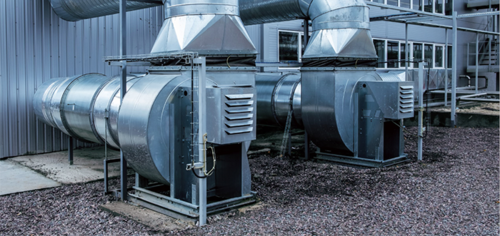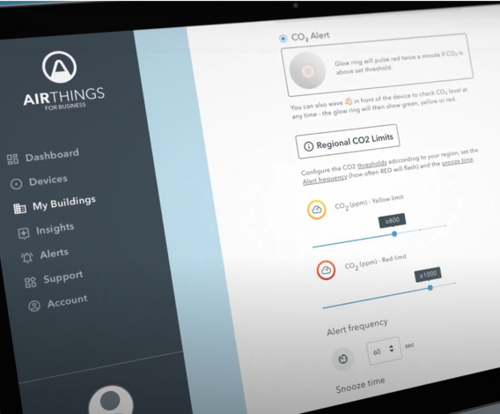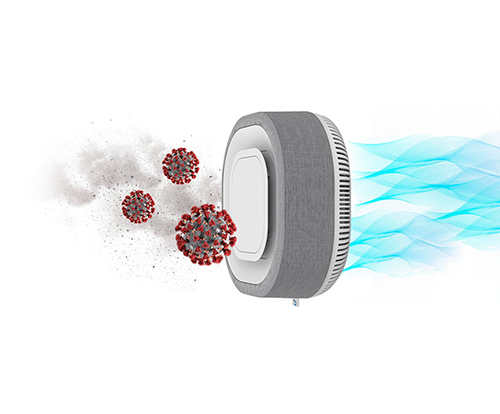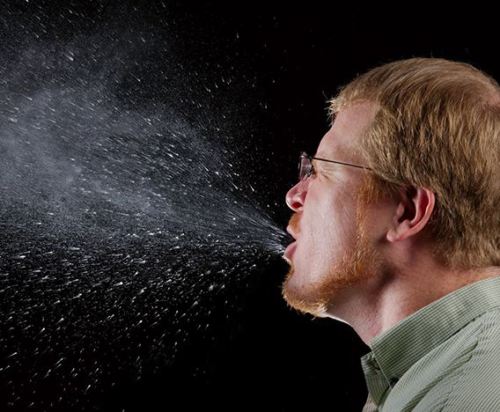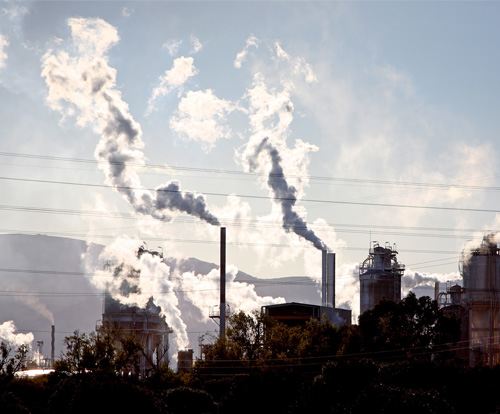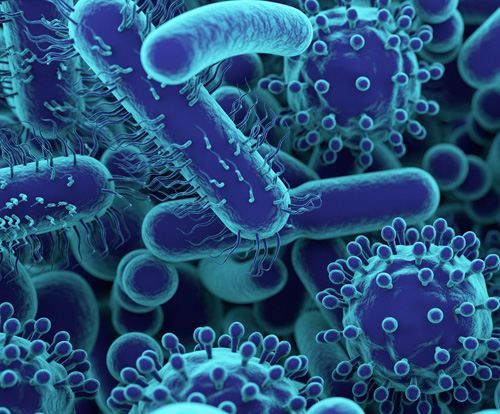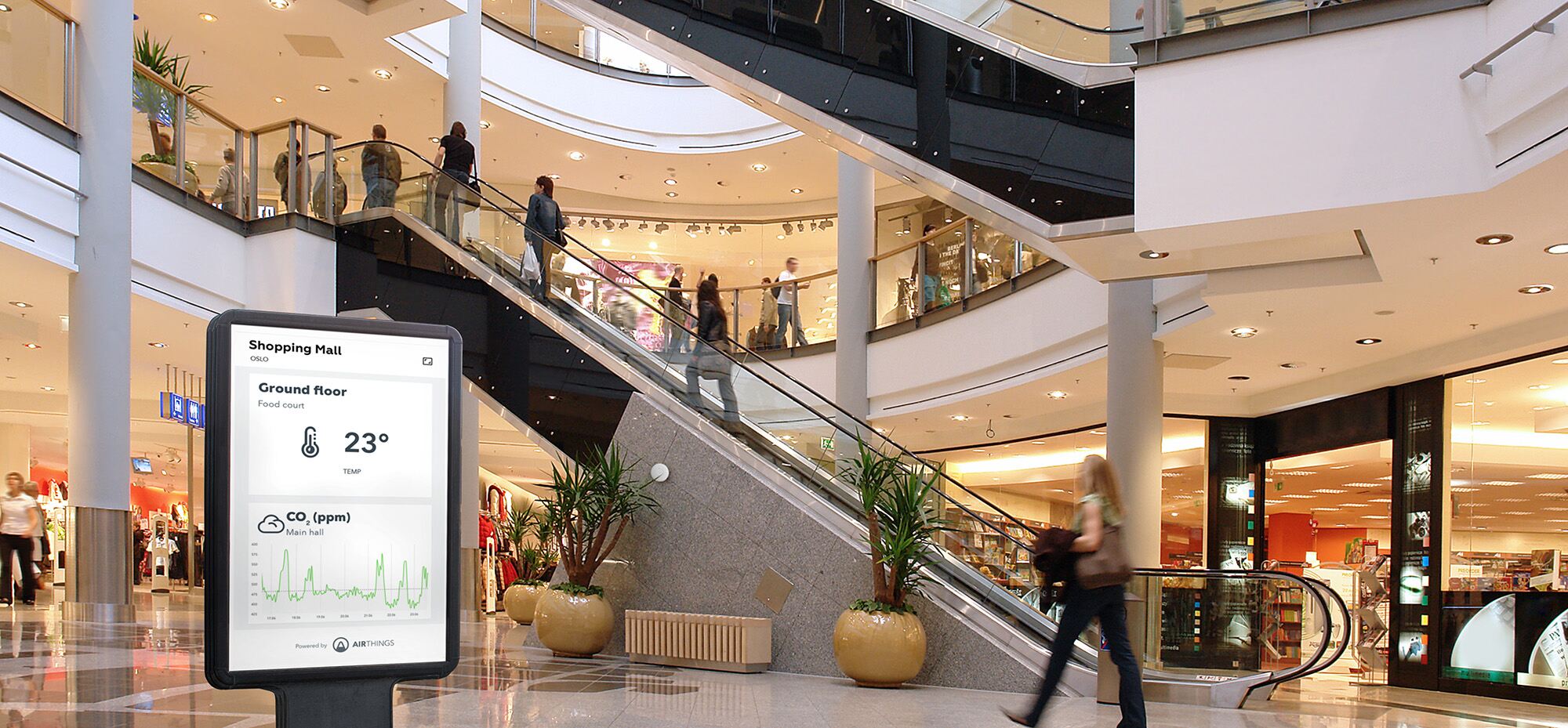
Indoor air pollution & the indoor generation
Indoor Air Quality (IAQ) refers to the air quality within and around buildings and structures and is directly related to the health and wellbeing of building occupants. Understanding and controlling common pollutants indoors can help reduce the risk of many health concerns. It is important to understand why good indoor air quality is so crucial to health and wellbeing.
Pollutant types
When talking about indoor air pollution we need to differentiate between the major routes of pollutant sources so that we can find the cause and tackle it.
- One, from ambient air pollution entering the built environment through windows, doors, ducting, and other routes that are created through the movement of air.
- The second sources of indoor air pollution are as a result of human activity within the space, including cooking, the burning of fossil fuels to heat the space, the use of equipment and cleaning.
- Third are noxious substances that are emitted from building materials, like PVC, asbestos, wood treatments and floor coverings.
The main indoor air pollutants are particulate matter (PM), volatile organic compounds (VOCs), carbon dioxide (CO2), radon (Rn) and NO2 can enter a building from outside. In addition, environmental factors like humidity, temperature and air pressure also contribute to air quality and can created conditions that encourage biological contaminants to increase, such as, bacteria, mould and viruses.
Sources, risks, and health effects
There are many pollutants that research has shown to harm the health and wellbeing of building occupants and many research projects are underway looking into more recently discovered air pollutants. For example, one of the most concerning issues of the 21st century is microplastics and there are several research groups working to understand the human health implications of breathing airborne microplastics. Recent literature suggests that airborne microplastics are more concentrated in indoor spaces and contain the most microfibres, which are considered the most harmful of microplastics to the human respiratory system. The main sources of indoor and outdoor exposure to these pollutants include synthetic textile fibres, rubber tyres, upholstery and household furniture, and landfills. Microplastics are grouped under the generic tern particulate matter (PM).
Below are some of the most common indoor pollutants.
 Particulate matter
Particulate matter
PM is a mixture of solid particles and liquid droplets found in the air. It includes natural sources like pollen, desert and land dust and anthropogenic sources including wood and coal burning, tyre and brake dust and industry emissions. PM is classified by size with the largest PM10 and the smallest PM2.5 and PM1. PM2.5 is 30 times smaller than the diameter of the average human hair. PM is small enough to be inhaled deep into the lungs and pass into the bloodstream where toxic particles can become embedded in vital organs like the heart and brain. It has also been proved that PM can carry and transport toxic compounds and biological agents including bacteria, viruses, and fungi. Children and the elderly and those suffering with heart and lung conditions are most vulnerable.
 Volatile organic compounds
Volatile organic compounds
VOCs are organic chemical compounds that evaporate easily at room temperature, and usually have an odour. VOCs are damaging to the environment and harmful to human health. These artificial compounds can be found in the built environment and are emitted from an array of everyday items and activities. Concentrations of VOCs are 10 times higher indoors than outdoors due to the gases accumulating in enclosed spaces like homes, offices and other indoor environments. They are emitted from cleaning products, craft products/adhesives, children’s toys, paints and varnishes, candles and open fires, fragrances, cooking fumes, new furniture and floor coverings. In the presence of sunlight, VOCs react with other air pollutants (NOx) to produce tropospheric (ground level) ozone. Ground level ozone is neurotoxic and can cause damage to the environment including harm to crops. It is the main component of smog around cities or basins where polluted air becomes trapped. The health effects of VOCs may be short term, like headaches, eye, nose, throat inflammation, irritation of skin, coughs, and painful breathing even pneumonia and bronchitis. Long term effects include damage to the central nervous system (neurotoxicity), cardiovascular disease and reproductive toxicity and impacts on the liver and kidneys.
 Carbon dioxide
Carbon dioxide
CO2 is a greenhouse gas that is natural and harmless in small quantities, however, this gas, which each person exhales around 24,000 times each day, can have harmful effects on our health and wellbeing, when it accumulates indoors where we spend 90% of our time.
Workplaces, schools and colleges frequently have very high levels of CO2 as rooms have high occupancy rates for significant periods of time throughout the day. When a classroom is filled with children CO2 levels rise quickly, often exceeding the DfE guidelines of a maximum 1500ppm (parts per million). And this directly affects the performance and cognitive functioning of room occupants, causing tiredness, drowsiness, lack of concentration and the increased transmission of viruses like Covid-19, flu and colds.
As buildings have been made more energy efficient over the years and draughts have been excluded they are unable to breathe naturally. And it is important that buildings are made energy efficient so that energy usage and carbon emissions can be reduced, however, the natural ventilation in a building must at the same time be replaced with mechanical ventilation or other natural methods like louvres and stacks.
Buildings benefitting from a mechanical ventilation system should ideally set the system to six air changes per hour, meaning that six times the volume of the room is provided in external air every hour. At this rate 95% of contaminants in the air would be removed in 30 minutes. A consistent CO2 value below 800ppm is likely to indicate that an indoor space is well ventilated and levels higher than 1500ppm in an occupied room indicate poor ventilation and action should be taken to improve it.
 Radon
Radon
Radon is a naturally occurring radioactive gas released from the decay of other uranium, thorium, and radium in rocks and soil. It is an invisible, odourless, tasteless gas that can enter homes through cracks in floors, walls, or foundations, and build up indoors. Radon levels can be higher in buildings that are well insulated, tightly sealed, and/or built on soil rich in the elements uranium, thorium, and radium. Basement and first floors typically have the highest radon levels because of their closeness to the soil. Leading cause of lung cancer among non-smokers. Radon decays quickly, giving off tiny radioactive particles. When inhaled, these radioactive particles can damage the cells lining the lungs. Exposure to radon gas is the leading cause of lung cancer in non-smokers and is responsible for more than 2,000 deaths in the UK every year, according to the UK Radon Association.
Environmental factors
 Humidity
Humidity
Humidity is the concentration of water vapour in the air. When levels are too high, condensation and the growth of mould occur leading to damage to the fabric of the building and causing significant health risks. Low humidity levels cause static electricity, dry skin and increase the transmission of infectious diseases. It is generally recommended that relative humidity (RH) be between 40 and 60% in most buildings.
 Temperature
Temperature
The temperature in a building affects mood, comfort level, and alertness. A temperature of 19 to 24°C helps to ensure the comfort of building occupants and reduces the risk of virus transmission.
 Biological contaminants
Biological contaminants
Biological contaminants include pollen, bacteria, moulds, mildew, viruses, animal dander and cat saliva to name but a few. In addition the protein in urine from rats and mice is a potent allergen. Contaminated HVAC systems can become breeding grounds for mould, mildew, and other sources of biological contaminants and can then distribute these contaminants throughout the building.
 Viruses
Viruses
Viruses such as flu, common cold or SARS-CoV-2, are transmitted through larger respiratory droplets, expelled when an infected person talks, breathes, or coughs, and is also passed on through miniscule respiratory droplets called aerosols. These aerosols remain suspended in the air, building up in poorly ventilated spaces and spreading infection. Respiratory aerosols account for 90% or more of COVID-19 transmission.
 Mould
Mould
Mould is a microscopic fungus that thrives in damp, warm conditions. Some moulds have beneficial products such as yeasts and penicillin, while others live off items of food and building materials, which can lead to property damage and serious health issues. Mould needs moisture to grow, so the humidity levels in buildings should be monitored and controlled. It is recommended that relative humidity (RH) should be between 40% & 60%. Mould spores are invisible to the naked eye, but in the right temperature, moisture, and nutrient conditions they form new visible mould colonies.
Why is indoor air quality important?
Inadequate ventilation can increase indoor pollutant levels as fresh air from outside is not able to dilute stale indoor air. Most people spend over 90% of their life indoors and we are known as the indoor generation. harmful airborne pollutants can build up quickly in poorly ventilated spaces, causing indoor air pollution to be up to five times higher than that outside.
The pandemic brought the importance of indoor spaces to the forefront and safeguarding the health of people in public spaces became a focal point. As a consequence, environmental and air quality certification schemes are becoming more widely supported.
The forgotten 2.6 billion
According to WHO, around 2.6 billion people still cook using solid fuels like wood, crop wastes, charcoal, coal, and animal dung, and kerosene in open fires and inefficient stoves. Most of these people live in poverty in low and middle-income countries. In these poorly ventilated dwellings, indoor smoke can be 100 times higher than WHO guidelines for fine particle levels. Exposure is particularly high among women and young children, who spend the most time near the domestic hearth. There are close to 4 million people who die prematurely each year from illnesses attributable to household air pollution, including pneumonia, stroke, heart disease, COPD, and lung cancer. Access to clean cooking fuels and technologies in these countries is increasing by just 1 percent a year.
In contrast, in the developed world, the leading causes poor health and premature death due to poor indoor air quality are radon, tobacco smoke, VOCs, particles, allergens, and microbial agents. Studies have shown an association between poor IAQ and lung cancer, allergies, heart disease and respiratory infections.
How are Governments and organisations tackling air pollution?
Some indoor air pollutants have received more public attention and Government action than others. For example, smoking was banned on short-haul flights in the 1980s, but now it’s unthinkable in the EU to allow non-smokers to be exposed to second-hand smoke in public spaces.
In 2004 in the UK, the Department of Health proposed guideline values for five key indoor pollutants, NO2, CO, formaldehyde, benzene, and benzo(a)pyrene, and, in 2019, Public Health England (now UKHSA) published its ‘guidelines for volatile organic compounds in indoor spaces’. More recently, three further, highly important documents have been published to further promote the seriousness of poor IAQ and the effects it has on health: ‘Every breath we take: the lifelong impact of air pollution’ (RCP/RCPCH, 2016), ‘The inside story: health effects of indoor air quality on children and young people’ (RCPCH, 2020) and NICE guidance on indoor air quality at home (2020).
Additionally, the Institute of Air Quality Management recently published a comprehensive Indoor Air Quality guidance document (IAQM, 2021) to assist qualified practitioners in the assessment of indoor air quality. The House of Lords demanded a more ambitious approach to tackle ambient air pollution and voted in favour of an amendment to the Environment Bill, committing the government to reduce levels of fine particulate matter (PM2.5) to within WHO guidelines by 2030 at the latest.
In December 2021, the Government published significant changes to the Building Regulations, in an attempt to help the UK, deliver net zero by 2050. The document recognises that good quality air, free of pollutants, can go a long way to improving the overall wellness of building occupants.
Moreover, several organisations, like BESA, the British Lung Foundation, Global Action Plan, and the National Institute for Health Care Excellence, are campaigning for local governments to draft air quality strategies that specifically deal with indoor air and sets up measures to identify poor indoor air conditions.
What can you do?
Passing laws is not the only way to improve the quality of the air we breathe. We can all take steps to control and reduce airborne particles and chemicals in indoor spaces.
Measure pollution
Most ambient and indoor air pollution is invisible to the naked eye, apart from when smog forms and so to detect pollution we must use air quality monitoring solutions. By using an indoor air quality sensor, you can see what’s in the air and monitor the levels of pollutants. We use Airthings for Business, whose award-winning IoT technology includes a number of different sensors, and which can be integrated easily with building management systems. These IAQ monitors benefit from up to ten sensors that detect PM1, PM2.5, radon, VOCs, CO2, humidity, temperature, air pressure, light, noise and a virtual sensor for virus risk. Its virus risk indicator looks at four factors of airborne virus risk to rank exposure level out of ten.
Filter and ventilate smartly
This means having adequate mechanical ventilation systems to improve efficiency and indoor air quality. By upgrading mechanical ventilation systems in a building, you can save on energy and reduce carbon emissions and improve air quality at the same time with upgrades to heating, ventilation and air conditioning (HVAC) systems often paying for themselves in a relatively short time. Regular maintenance of HVAC systems should be undertaken to keep it running efficiently with ducting cleaned, and filters changed regularly.
Most houses in the UK rely on natural ventilation and as many homes will have been made more airtight over the years to reduce draughts they are likely to have poor ventilation. As a result, many UK homes, especially flats have a problem with damp and mould growth which is harmful to health and can exacerbate existing health conditions.
Indoor air quality should ideally be monitored 24/7 using high quality sensors – once you know what’s in the air you can take appropriate steps to improve it. If the opening of windows is your only means of ventilation then an outdoor air quality monitor can indicate when ambient air quality is poor so windows can be kept closed until the danger has passed.
Indoor air quality tips
- Cleaning, installing new office or home furnishings and carpets and painting all emit VOCs
- Reduced ventilation rates increase indoor air pollutant concentrations
- Using air quality monitoring devices allows you to see what’s in the air you breathe and highlights any environmental issues like high humidity
- Once you know what the problem is you can take steps to improve the indoor air quality
- Impurities can be removed through filtration units on mechanical ventilation systems and where these aren’t present air purifiers with HEPA filters will also clean the air
- CO2 cannot be filtered, and so increased ventilation is required when CO2 levels rise
- Using the printer generates ground level ozone
Work together
Every action we take has an effect on others, for example, driving instead of walking or using public transport increases carbon emissions that are dangerous to the planet and our health. If you are a business owner, work to reduce your businesses carbon footprint by making buildings more energy efficient, adopt renewable technologies and provide employees with access to EV charging. Support local clean air initiatives and do you bit where you can make the most impact.
Highlights
- Main sources of indoor air pollution: ambient infiltration, human activities, building materials
- Most people spend more than 90% of their life indoors
- Indoor air can be up to five times more polluted than outdoors (in developing regions this number is up to 100 times more)
- Children and the elderly are the most vulnerable and in developing countries women are especially vulnerable to indoor air pollutants
- Adequate ventilation is extremely important
- Follow the tips: Measure pollution + Filter and Ventilate Smartly + Work together
Further reads and resources
https://www.epa.gov/indoor-air-quality-iaq/introduction-indoor-air-quality
https://www.paho.org/en/topics/air-quality-and-health/ambient-and-household-air-pollution-and-health-frequently-asked
https://pubmed.ncbi.nlm.nih.gov/15330772/
https://www.ecowatch.com/epa-new-toxic-chemical-air-pollution.html https://ehp.niehs.nih.gov/doi/10.1289/ehp.1510037
https://www.who.int/news-room/fact-sheets/detail/household-air-pollution-and-health
https://www.who.int/data/gho/data/themes/topics/topic-details/GHO/household-air-pollution
https://www.usgbc.org/about/mission-vision
https://airqualitynews.com/2022/02/01/a-brief-history-of-indoor-air-quality/
https://www.independentsage.org/covid-scores-on-the-doors-an-approach-to-ventilation-fresh-air-information-communication-and-certification/
https://www.bbc.co.uk/news/science-environment-57102372
https://www.unep.org/news-and-stories/story/seven-things-you-should-know-about-household-air-pollution
https://www.asthmaandlung.org.uk/who-we-are/
https://seetheair.org/?s=air+purifier+review
Sundell J. On the history of indoor air quality and health. Indoor Air. 2004;14 Suppl 7:51-8. doi: 10.1111/j.1600-0668.2004.00273.x. PMID: 15330772.
Sundell, J. (1999) (Principal author) Indoor Environment and Health, Stockholm, Sweden: National Institute of Public Health.
Latest Articles
The business risks emerging from the global COVID-19 pandemic
Read More >Why indoor spaces have a higher risk of virus transmission
Read More >Enhance HVAC performance, improve energy efficiency and reduce emissions
Read More >High absenteeism and reduced wellbeing
Read More >How does air quality affect your business
Read More >What the experts say
Read More >Risk indicators and monitoring
Read More >Ventilation and filtration
Read More >Transmission & Prevention
Read More >The History of Air Pollution
Read More >Ambient Air Pollution
Read More >Climate change and the climate emergency
Read More >What’s in the air we breathe outdoors?
Read More >What’s in the air we breathe indoors?
Read More >Other indoor biological pollutants
Read More >How air pollution affects our lives
Read More >

